Let’s Stop Using Ankle Bracelets to Monitor Offenders
Smartphones do a better job and allow for positive reinforcement and incentives
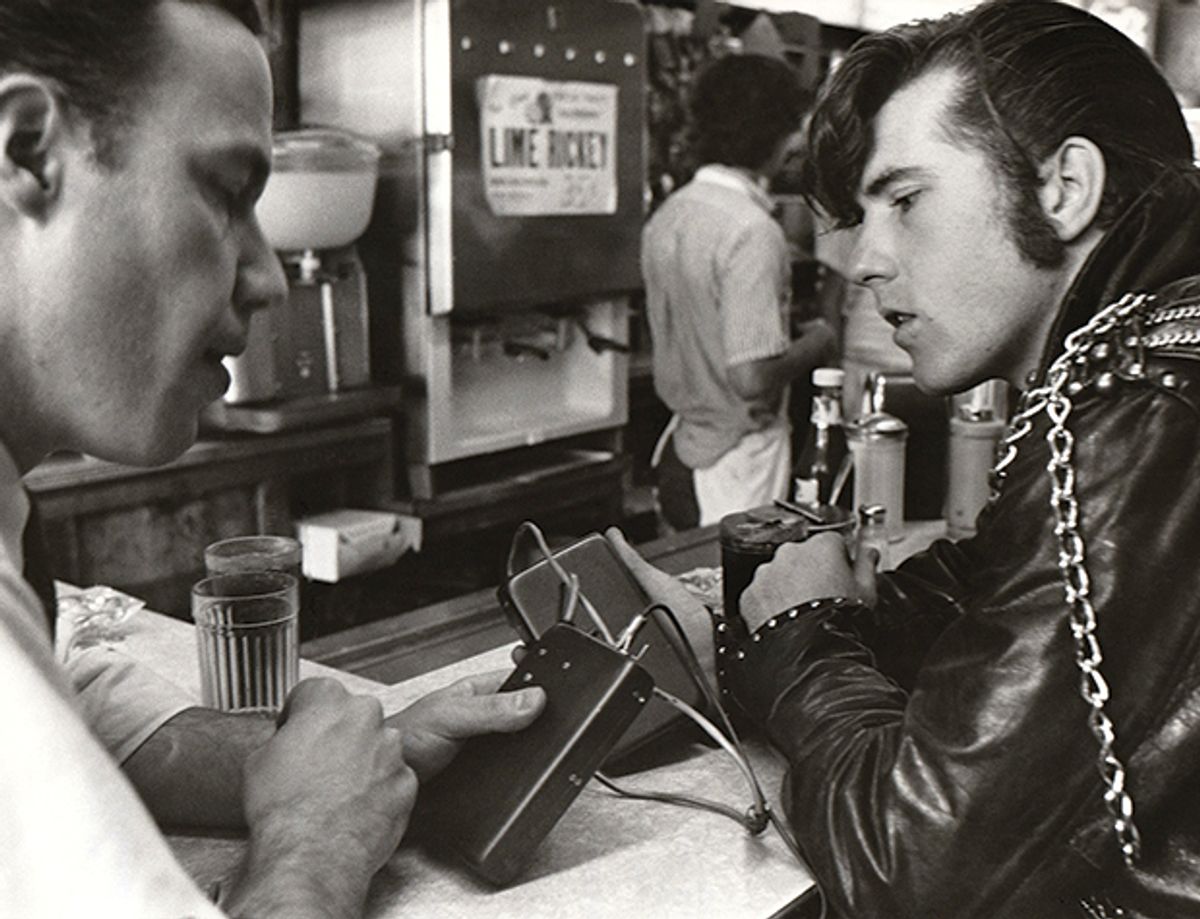
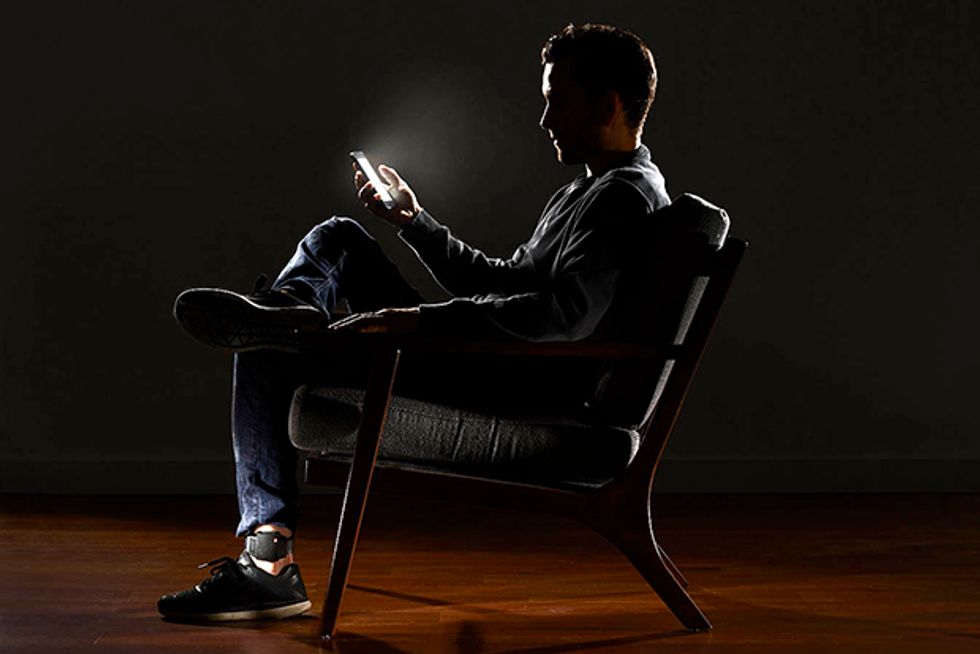
Imagine this: It’s early morning, and you’re sleeping alone in your bed. Suddenly your ankle vibrates, and a voice blurts out from beneath the sheets: “This is the monitoring center. You are not in your inclusion zone. Do you have permission to be outside this area?”
That’s what happened to a man named Jeffrey B. when his GPS-equipped ankle bracelet went berserk. The California Department of Corrections and Rehabilitation had strapped a tracking anklet on Jeffrey for good reason. He had pleaded guilty to 26 counts of peeping into windows and video recording young women while they were undressing. After three years in prison, Jeffrey was released. Local county officials decided, however, that because he had broken a previous five-year probation order, they would attach a second GPS monitor, which they controlled. He then had to live with a tracking device on each ankle.
Having two anklets, though inconvenient, ultimately helped Jeffrey. Although the county anklet was squawking about a violation, the state anklet was silent. Suspicious county parole officers had Jeffrey arrested, but given the inconsistency, the district attorney quickly dismissed the charge. The vendor of the county’s equipment admitted later to a “system error.”
Indeed, GPS anklet monitors can suffer all sorts of malfunctions, including mapping discrepancies, dropped signals, battery failures, water damage, and more. Although electronic monitoring systems have improved dramatically since I first experimented with them back in the 1960s, I view today’s widespread use of such equipment as fundamentally misguided. Here I’d like to review the evolution of offender-monitoring technology, explain my misgivings, and also show that a better approach—one based on smartphones rather than ankle bracelets—is on the horizon.
R. Kirkland Schwitzgebel, my late twin brother, and I are generally given credit for inventing the first electronic monitoring system for criminal offenders. (In case you’re wondering: We later shortened our family name to Gable.) Neither of us was an electrical engineer. Rather, we were studying psychology at Harvard, where we both enrolled in doctoral studies in 1958.
As a graduate student, I sat in classes taught by B.F. Skinner, who is well known for his theories of behavior and the power of positive reinforcement. I found his lectures pretty boring—he went on far too long about his pigeon experiments—but his ideas nevertheless intrigued me.
My brother’s graduate adviser was another famous Harvard scholar: Timothy Leary. Kirkland helped conduct a research study, headed by Leary, at a state prison for juvenile offenders in nearby Concord, Mass. The study involved the administration of psilocybin—or “magic mushrooms,” a psychedelic drug similar to LSD—to 32 prisoners in an effort to facilitate their rehabilitation. In the early 1960s, both LSD and psilocybin were perfectly legal in the United States, a situation that changed before the decade was finished.
When the Concord prison experiment ended, Kirkland was still interested in working with youthful offenders, as was I. But as grad students we had no professional credentials. So we simply hit the streets of Cambridge and recruited at-risk teenagers and probationers to participate in our study of positive reinforcement. We used food, subway tokens, haircuts, and cash—though no magic mushrooms—to encourage teenagers to participate in our psychotherapy project, which we called “Streetcorner Research.”
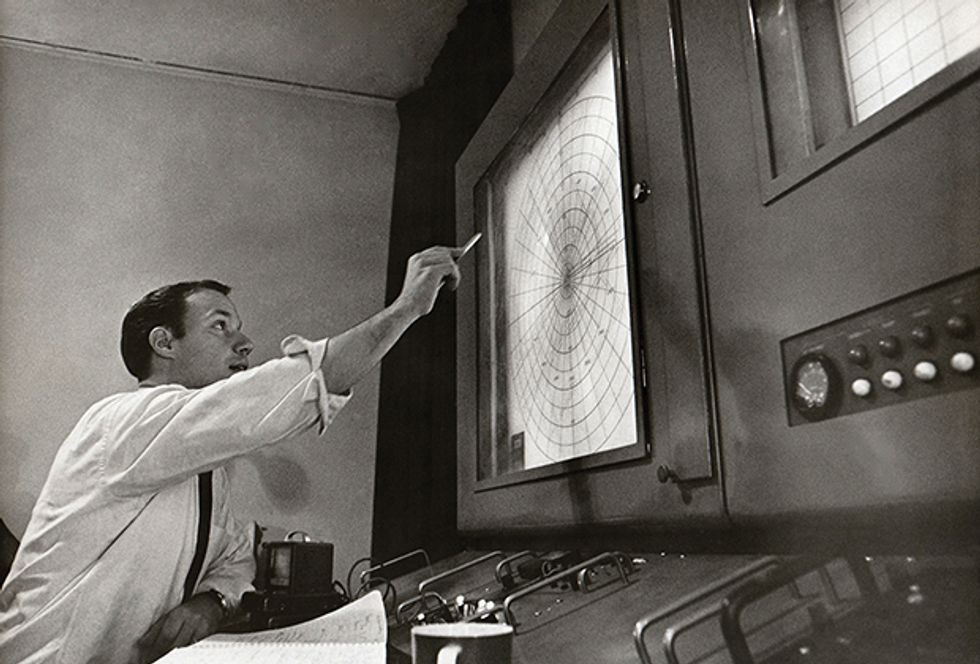
An important requirement of positive reinforcement is to give rewards promptly. In our case, this meant having contact with these youths when they were actually behaving better in the community—not simply when they reported to the project office. Thus, we conceived the idea of monitoring them electronically. It is probably fair to say that electronic monitoring is the love child of Skinner and Leary. My brother and I were merely enthusiastic midwives.
With the help of William Hurd, an electrical engineer, we cobbled together a monitoring system from military-surplus missile-tracking gear and off-the-shelf radio equipment. Our system had three basic components: a portable 27-megahertz AM transceiver with a timing circuit and battery pack; a Heathkit 27-MHz transceiver that could be placed outside apartment buildings or other fixed locations around downtown Cambridge; and a base station consisting of a World War II–era U.S. Navy radio receiver and a U.S. Army-surplus antenna rotator, a combination that sent signals to a control console and a large display screen in our office.
The early portable radio transceivers were heavy, about a kilogram each, and bulky by today’s standards, measuring 18 by 15 by 3 centimeters. Worse, they required a separate 1.4-kilogram battery pack. The military-surplus control console had three buttons labeled “Search,” “Track,” and “Destroy”—the last of which was mercifully disabled but often vigorously pushed by young probationers who visited the office. Our experiment yielded a U.S. patent (3,478,344), but the invention was never commercialized.
And, unfortunately, the monitoring idea was born into a world hostile to its very premise. At the time, the idea of tracking people in public places seemed entirely too Big Brotherish. The fact that we were using positive incentives didn’t help, either. Many commentators described what we were doing as “rewarding criminals.”
The concept of electronically monitoring offenders fell dormant for more than a decade, until a New Mexico state district judge named Jack Love described something he had been imagining: a hospital-type ID tag that could activate a card reader in a probationer’s home. He convinced Mike Gross, a former Honeywell Information Systems salesperson, to help develop the idea, and by the early 1980s the first of such “house arrest” systems were deployed.
House-arrest systems require the offender to wear a battery-powered ankle bracelet secured by a tamper-proof strap. The anklet emits a radio signal two or more times a minute. That check-in signal is detected by a base station, which is normally attached to a telephone landline in the offender’s home, although some newer base stations have cellular connections. The base unit relays the signal to a monitoring agency, where a central computer is programmed to send an alert to agency personnel if a check-in signal is not received when the offender is supposed to be at home.
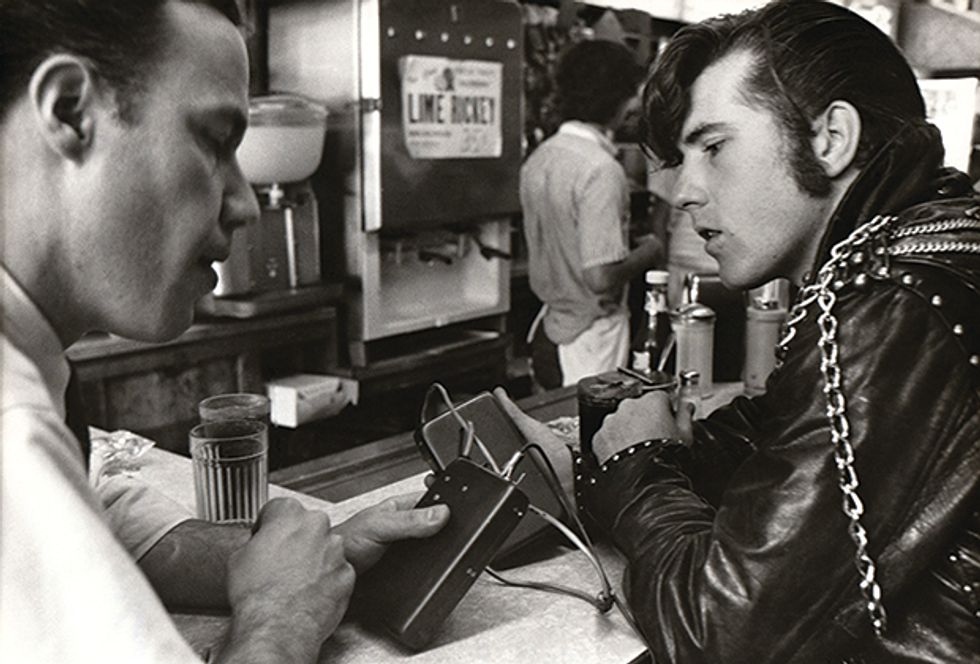

The availability of electronic monitors made house arrest a legitimate alternative to prison. By 1987, an estimated 4,500 U.S. offenders had worn monitoring anklets, and the devices soon became part of popular culture. The offbeat 2002 film Cherish, for example, featured a claustrophobic probationer who repeatedly tries to defeat her electronic bracelet. Her unsuccessful antics and the patience of her probation officer portrayed electronic supervision as an effective form of deterrence.
GPS monitoring of offenders soon followed, but it had a bumpy start. Although the U.S. military’s satellite-based navigation system became available for civilian use in 1983, it wasn’t practical for monitoring offenders because the military purposefully introduced measurement errors of up to 100 meters into the civilian version. At the turn of the millennium, after Congress put an end to this intentional degradation of GPS signals, several companies jumped at the opportunity to add a mobile component to home-based electronic supervision. By 2005, about 53,000 people were being monitored using GPS-enabled anklets on any given day in the United States, and by 2015 that number grew to about 125,000, according to the Pew Charitable Trusts. The monitoring of offenders in this way has also grown sharply in the European Union, Latin America, and Australia.
One reason these systems have become so popular is that house arrest and mobile surveillance seem to add a layer of safety while simultaneously providing a cost-effective escape hatch for the problem of prison overcrowding. But traditional house arrest (with a stationary RF unit in the house) was never intended to cure the misguided public policy that put too many people behind bars in the first place. It was intended simply to verify that a nonviolent offender was obeying curfew hours.
Under house arrest, an offender was under surveillance only at home, and he or she was free to work, attend school, go shopping or to medical appointments, visit relatives, participate in sporting events, and so on. GPS changed all that. It allowed criminal-justice agencies to greatly expand the boundaries of control beyond the home, by continuously monitoring offenders wherever they went. Some low-risk offenders (such as people found guilty of drug possession, drunk driving, shoplifting, school truancy, stealing classified information, or committing insurance fraud), who would not normally go to prison, got caught up in an ever-widening web of surveillance. Teenagers as young as 13 years old have been fitted with anklets.
Early on, correctional agencies tended to pay for RF house-arrest equipment and monitoring service. But with the advent of GPS technology, these agencies began to pass on much of the cost of monitoring to the offender. Many jurisdictions now impose a set-up fee of US $100, if not more, and a daily charge typically ranging from $5 to $20. Perhaps these fees are high because development costs for these systems are significant. Or it could be that the market is relatively small and the end users aren’t in a position to shop around. In any event, such fees can place a budget-breaking burden on a family already in or near poverty.
Electronic monitoring isn’t always about keeping the public safe: It is often intended as a form of punishment in itself. Even wealthy entrepreneur Martha Stewart, who became the poster girl for investor malfeasance in the early 2000s, complained about the restrictions placed on her after she was released from prison: Her anklet mostly limited her movements to her 153-acre estate. The federal judge in Stewart’s case wrote: “In my opinion, the sentence I imposed was particularly needed to reflect the seriousness of the offense, to promote respect for the law, and to provide just punishment.”
Historically, offender surveillance can be viewed as just one more physical attempt to deal with crime through punishment, prevention, or incapacitation. It’s part of a broad set of tools that includes prisons, moats, razor wire, locks, cash registers, computer passwords, and credit card security codes. These technofixes, as critics like to call them, tend to suppress a specific type of unwanted behavior but do not change the offender’s underlying motivations. Offenders often do behave better while they are being monitored and punished. But after the monitoring ends, it’s likely that the number of offenses they commit will gradually creep up to match those perpetrated by offenders who were never monitored.
In short, surveillance technology has spawned a profitable industry, expanded the monitored population, and infringed on humanistic values without showing a significant long-term reduction in crime.
So what might work better? Decades of psychological research indicates that a combination of punishment and reward is the best way to rehabilitate offenders. Offenders tend to push limits and ignore threats. (That, after all, is why they landed in jail or prison.) Therefore, punishment that is swift, certain, and yet moderate is a necessary component of rehabilitation. But rewards are even more important. Here, as in many realms, the carrot can be mightier than the stick.
One of the first things that a person released from prison wants is a smartphone. Most will obtain one, even if their resources are very limited. So instead of a more expensive and heavy 24-hour “prosthetic conscience” strapped to a parolee’s ankle, a specially programmed smartphone will work in many cases. Both ankle monitors and smartphones have GPS functionality, and properly configured smartphones can still tether offenders electronically to their parole officer’s computer or laptop. But smartphones also have apps, which bring new opportunities.
Today software developers are creating and field-testing an astounding array of new smartphone apps to aid in rehabilitation. One of the leading apps is now being used in more than 25 U.S. states. What do these apps do? Many expressly aim to ensure public safety. Unfortunately, they can overdo it just as the old anklets did, by overwhelming corrections officers with mostly irrelevant alerts about offenders’ activities. Apps that focus instead on giving users simple reminders of court dates, medical appointments, and job-related assignments, followed by positive recognition, actually work best to facilitate rehabilitation.
So what’s to prevent an offender from simply leaving the smartphone at home? An app by Corrisoft, based in Lexington, Ky., supports an optional tamper-proof anklet that communicates wirelessly with the offender’s phone via Bluetooth. Outreach Smartphone Monitoring of Montrose, Colo., and House Arrest App of Ft. Smith, Ark., pair their apps with an optional tamper-proof wrist bracelet. AnyTrax of Decatur, Ga., dispenses with ankle and wrist bracelets, instead requiring the user to occasionally verify his or her identity by speaking into the smartphone. First Place for Youth of Oakland, Calif., has the at-risk young adults it works with take smartphone selfies as a means of verifying their location prior to giving tangible positive incentives. No missile-tracking equipment required.
The smartphone can help gather information that goes beyond just location. For example, because drugs and alcohol so often contribute to criminal behavior, biometric sensors are frequently used to verify compliance with the conditions of probation or parole. Breathalyzers, which indirectly estimate blood-alcohol concentration, are the most common way to do that.
Miniaturized and Bluetooth-enabled, these gadgets have even become a fashionable phone accessory in certain circles. To use the Breathalyzer app by Outreach Smartphone Monitoring or by House Arrest App, the user utters a pass phrase and then blows into the Breathalyzer while the app captures and transmits a short video along with the user’s GPS location to a corrections officer.
What’s next for alcohol testing? Perhaps a tattoo. Perspiration is a more reliable real-time measure of a person’s blood-alcohol level than breath. Last year researchers at the University of California, San Diego, fabricated a stick-on tattoo with screen-printed, chemically coated electrodes capable of sensing alcohol. The electrodes send signals to a tiny circuit board that connects to a phone via Bluetooth.
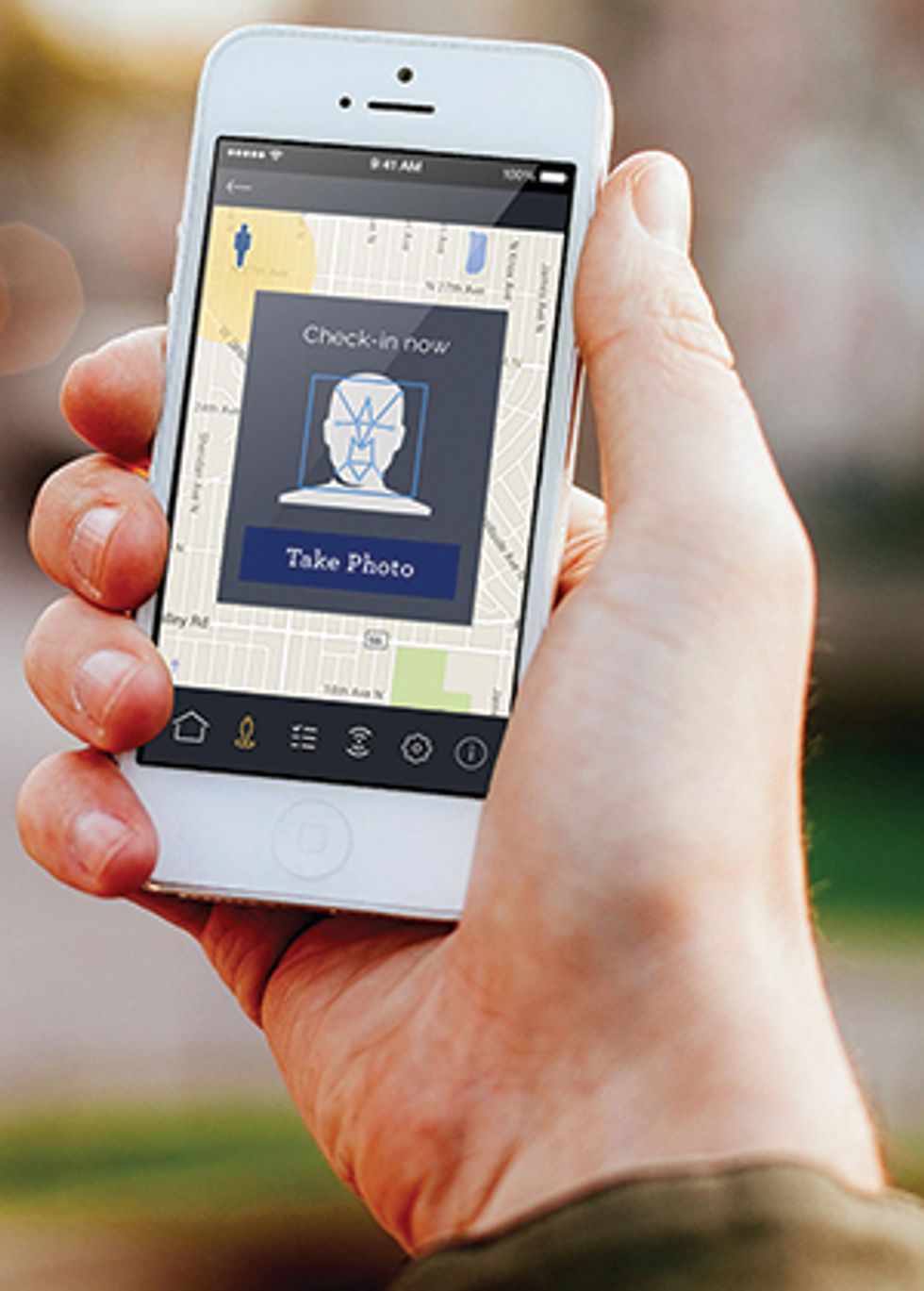
Another possible application is marijuana testing. Some experts claim that abnormal performance tests involving balance—as well as reaction time, memory, and time estimation—can indicate the use of marijuana and other recreational drugs. An iOS app called Canary tests users by having them hold the phone still against their chest while they balance on one foot; the smartphone’s three-axis accelerometer measures the results. Obviously, some people couldn’t perform such a balancing act even if they never used marijuana. Nonetheless, corrections programs will probably explore such approaches.
These programs are already remotely monitoring recreational drug use with sleep trackers. A corrections organization called ComCor, in Colorado Springs, for example, employs a sleep-tracking wristband called SleepTime to detect the use of marijuana, cocaine, or opiates. The wristband, introduced more than a dozen years ago, records motor activity every minute. These readings are then compared to the person’s normal sleep patterns, recorded over one week at the start of the monitoring.
While those measurements may be inadequate to identify individual instances of substance abuse, they’re generally good enough to notice trends. And consumer-grade devices are getting more sophisticated. The original SleepTime device wasn’t Bluetooth-enabled, but newer activity and physiological monitoring wristlets can link up wirelessly with smartphones. Jawbone’s UP24 fitness tracker, for example, is a sleek wristlet that easily syncs to an iOS or Android phone. While no companies have yet paired it with an offender-monitoring app to do remote detection of drug use, the opportunity is ripe.
Another approach some app developers are pursuing is gamification—that is, the addition of game elements and mechanics to encourage positive behavior. One recent offender-monitoring app, SPROKIT (Successful Prisoner Re-entry Opportunities & Knowledge Interactive Tool), uses “missions” such as arriving on time for a court appointment or completing a job application as goals to be assigned by a probation officer. Points are then posted on a leaderboard, and when certain milestones are reached, the user receives rewards or privileges such as a restaurant gift card or a reduction of the probation sentence. The final goal of the game is, obviously, to get the offender integrated into society, which comes with its own reward matrix.
Of course, offenders will try to defeat any monitoring system, smartphone based or otherwise. In the colorful words of Kutztown University criminal justice researcher Marc Renzema, most offenders are “not sitting at home praying for forgiveness.”
Some offenders, determined to skirt the law, cut off their ankle straps, ignoring the consequences. Such action will trigger an alert, but law enforcement may not arrive in time to prevent a crime. Dozens of homicides have been committed in the United States by individuals being monitored.
But most offenders who try to defeat their GPS ankle monitors aren’t out to commit violent crimes. They just want to test the operational limits of the system or to escape from a pending court hearing. One teenager cut off her anklet and superglued it to her cat before leaving the house. She mistakenly assumed that having the anklet moving around inside the house would prevent detection. In another hack, advertised on YouTube, a user sleeps on the kitchen floor while his leg and anklet are chilling in the refrigerator. Sufficiently cooled, his anklet apparently snaps off.
Covering the anklet with aluminum foil is yet another widely promoted way to defeat the system. Because GPS signals are so iffy indoors, ankle monitors are often set to issue an alert only when a location reading is obtained beyond the wearer’s allowed area of movement. The “tinfoil cheat” prevents GPS signals from reaching the monitor. This tactic reportedly did defeat at least one manufacturer’s equipment, but most systems use built-in metal detectors to thwart such attempts.
Although most ankle-monitor hacks prove unsuccessful, William “AmmonRa” Turner demonstrated a real vulnerability at the 2015 DEFCON hacking conference. He placed an anklet in a Faraday cage to block its electromagnetic signals and thus prevent a warning alert from being sent to the monitoring agency. He then removed the SIM card, and by doing some fancy number changing using an online SMS-spoofing service, he was able to send a false “OK” signal to the agency.
Even if an offender wants to comply, the monitoring system may fail, as it did for Jeffrey B., the California Peeping Tom. Smartphone systems are no different. We’ve all faced the problem of relatively short smartphone battery life, and software glitches are common, even with widely used apps. So I have great sympathy for the engineers and developers at startups entering this market, who must contend with both vigorous competitors and belligerent users.
But the real test will be whether correctional agencies use the new capabilities of smartphones to reward rather than just to punish. Until then, the ideas that gave birth to the Skinner-Leary love child of electronic offender monitoring will remain in orphan status.
This article appears in the August 2017 print issue as “On Their Last Legs.”
About the Author
Robert S. Gable is an emeritus professor of psychology at Claremont Graduate University in Claremont, Calif.